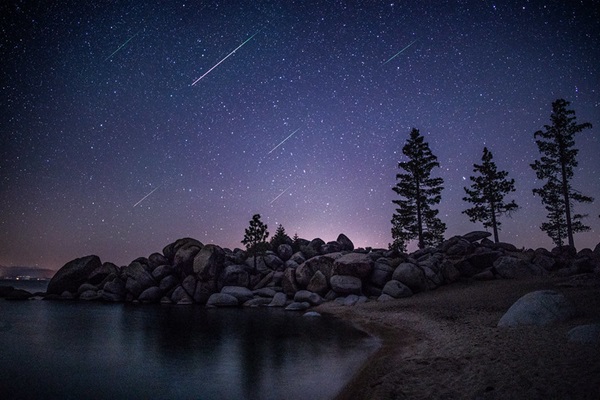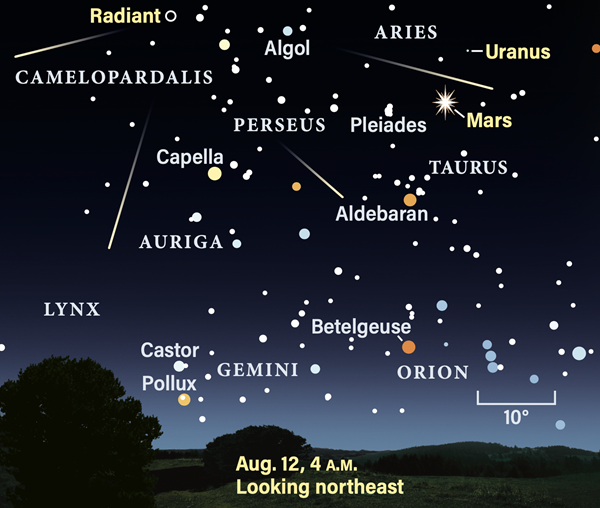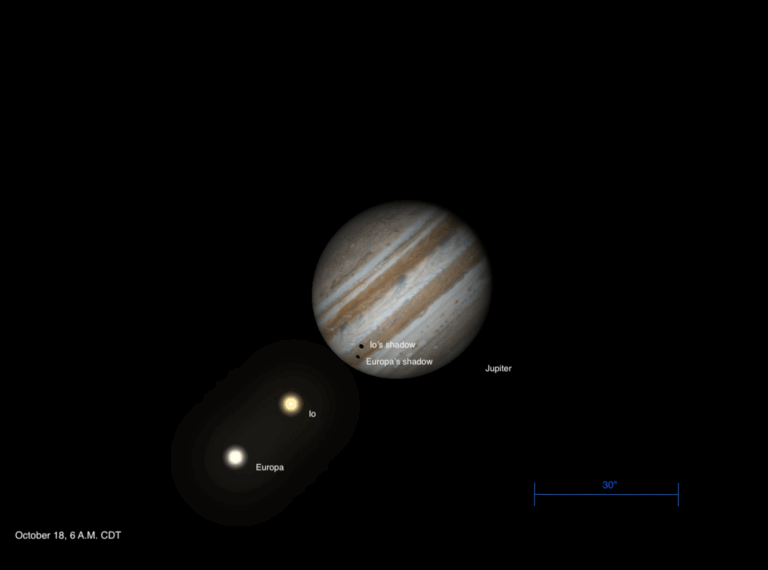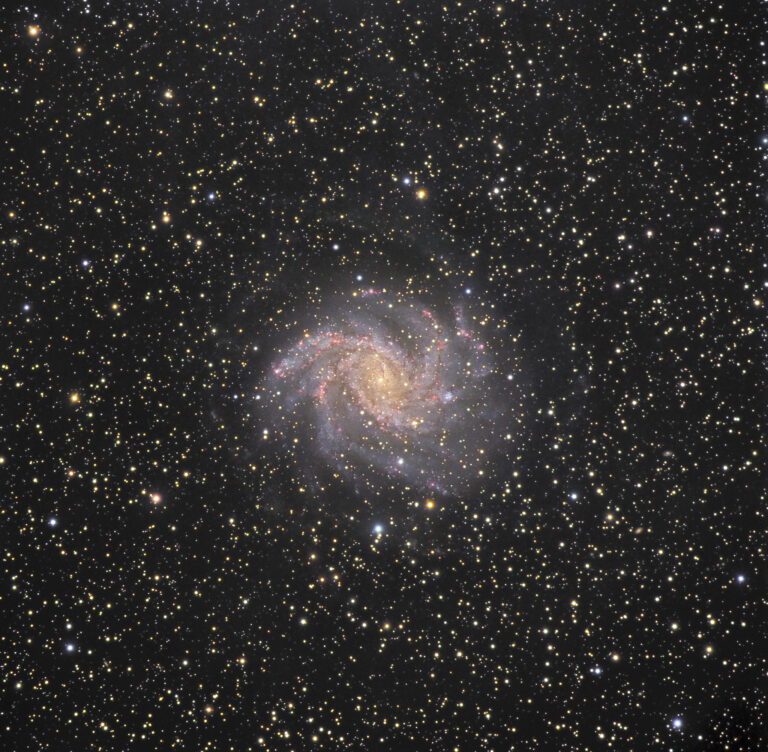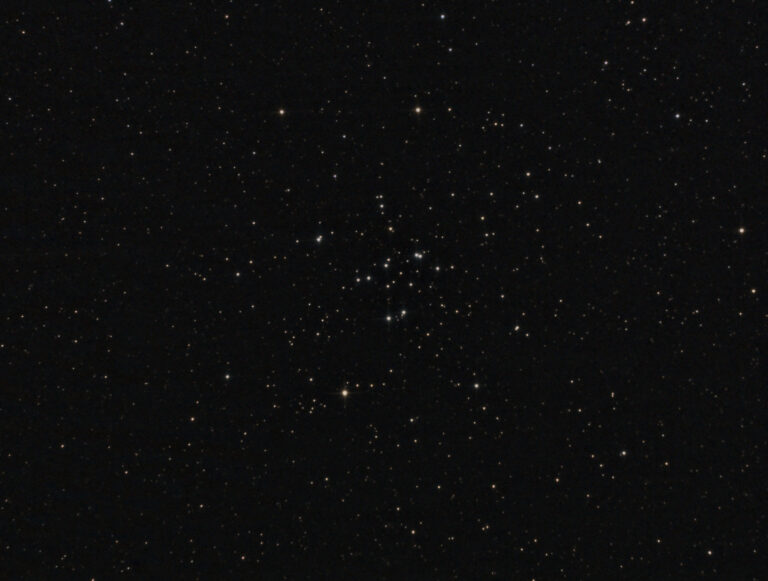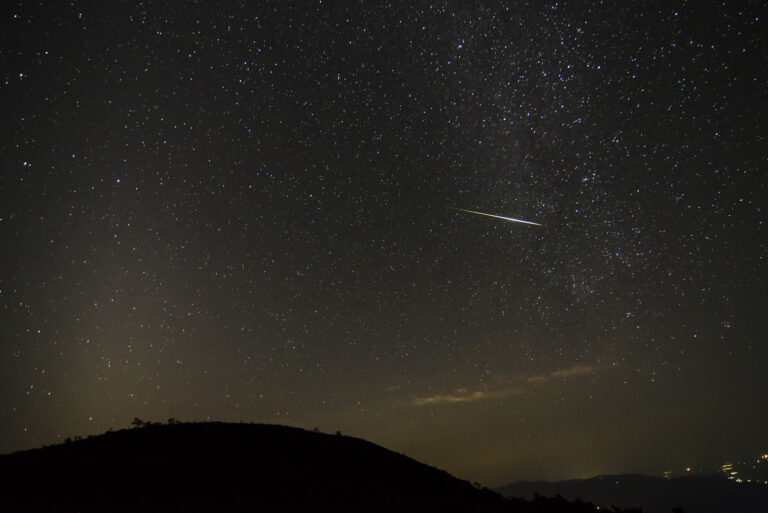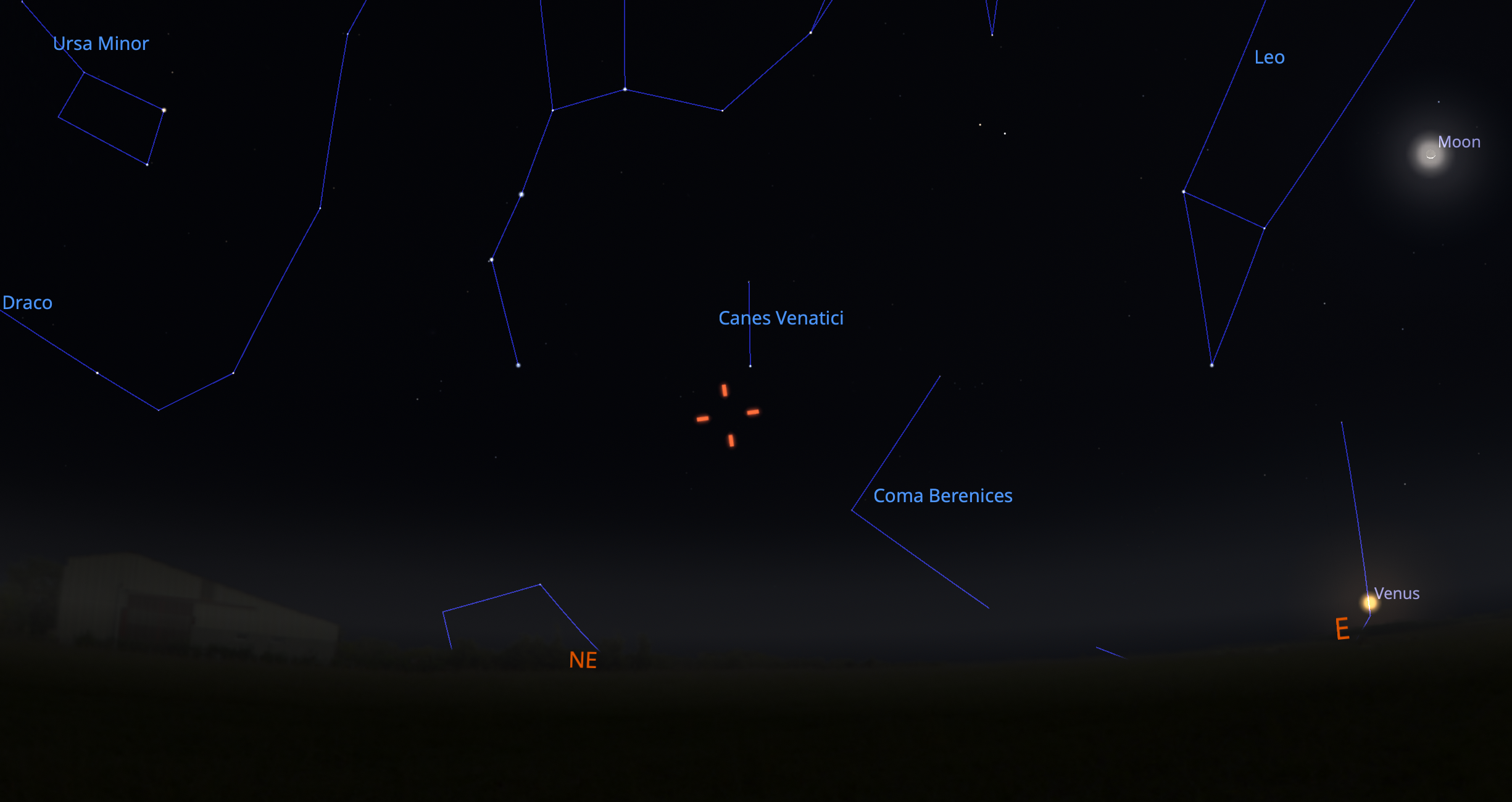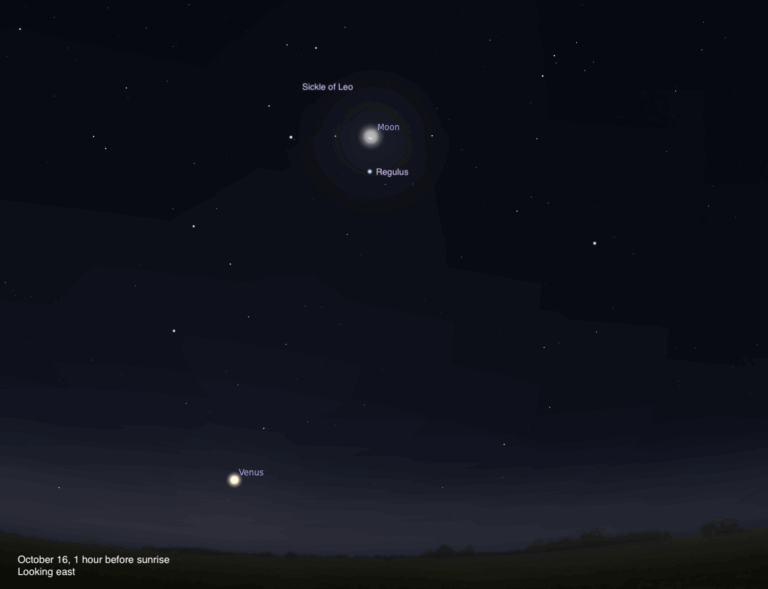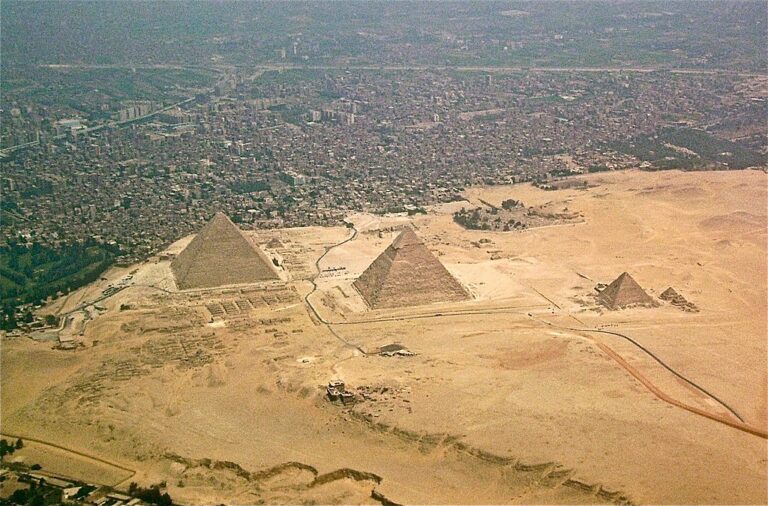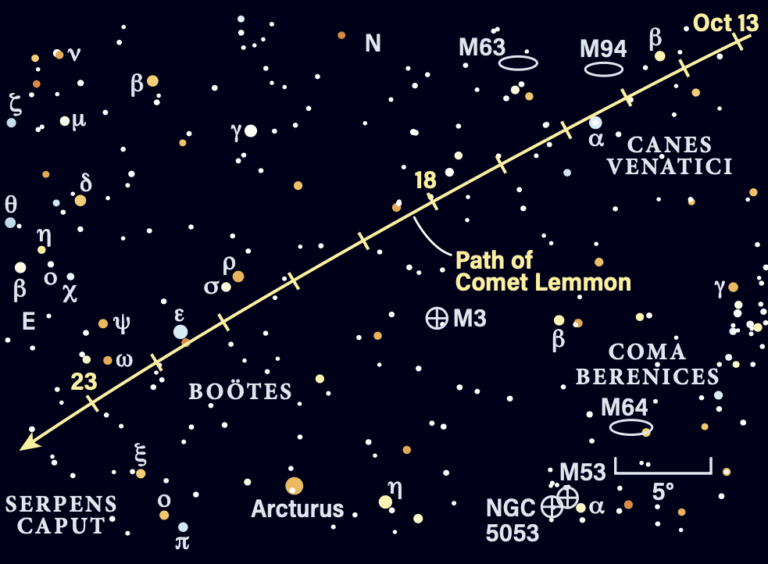Key Takeaways:
Friday, Aug. 12, marks the official peak of the year’s most popular meteor shower: the Perseids.
The shower’s radiant, which sits in Perseus the Hero near magnitude 3.8 Miram (Eta [η] Persei), is highest in the early morning hours before dawn, so the best time to catch the Perseids’ peak is nominally Friday morning before sunrise. That morning, observers under perfect conditions could expect to see some 100 meteors per hour as Earth’s rotation carries the leading hemisphere into the debris stream that generates the shower.
How to watch
But this year, there’s an unfortunate catch: On Friday morning, August’s Full Super Moon will still cast its glaringly bright light across the sky.
So, are prospects totally ruined? Fortunately, no, and you have a few options. If you can only observe on Friday, you may still catch the occasional fireball streaking across the sky, even in the bright moonlight. But if you can get out Thursday morning instead, the Super Moon will set about an hour before sunrise, offering up a sliver of dark skies against which more frequent average-brightness meteors will show up. Plus, even before the Moon sets, its light will diminish as it sinks lower in the sky, extending the window in which you may see shower meteors to another hour or two earlier still.
To find the Perseids’ radiant, look about 60° above the northeastern horizon one to two hours before dawn. (For a rough idea of how high that is, hold one fist at the end of your arm, with your pinky at the horizon and your thumb on top. Then stack your other fist on top of it; do this until you’re six fists high — that’s about 60°.)
And if your skies are cloudy or you’re just not an early riser, there’s one more option: Sky-Live TV will be broadcasting the Perseids from two excellent dark-sky sites: Pico do Arieiro on Madeira and Roque de los Muchachos Observatory in Garafía, La Palma. The broadcast will start at 11:15 P.M. UT on Aug. 12 — that’s 7:15 P.M. EDT in the U.S. You can check out the livestream below, either during or after the broadcast:
The Perseids in detail
Active from July 17 to Aug. 24, Perseid meteors come from the debris left behind by Comet 109P/Swift-Tuttle, which travels through the inner solar system and rounds the Sun every 133 years. Its last passage near Earth was in 1992 and its next will be in 2126, when astronomers estimate it may grow brighter than 1st magnitude.
Perseids are considered fast-moving meteors, screaming through the atmosphere at some 37 miles (59 kilometers) per second and leaving bright trails that last for several seconds. Blazing fireballs are even more spectacular, casting shadows as they burn up.
Although the Perseids will wind down slowly through the last full week of the month, the Moon’s phase means it will remain in the morning sky even as it slowly wanes. Nonetheless, if you’re up early, you may again want to spend a few moments outside before twilight to look for fireballs or other brighter-than-average meteors.
Next year, prospects for the shower are much better — although the Moon will still be in the sky around the peak, it will be a thin waning crescent whose light won’t interfere nearly as much.

